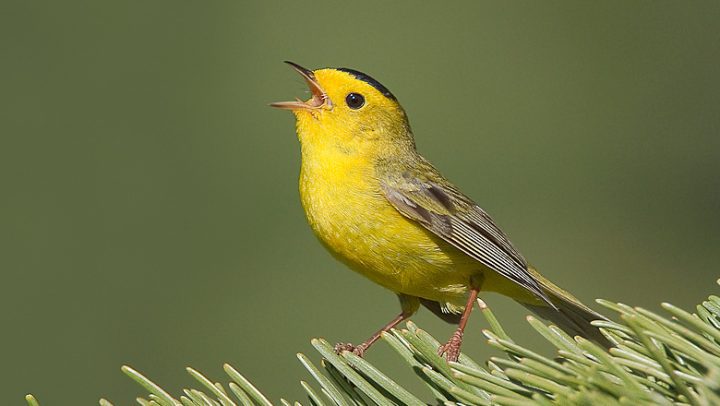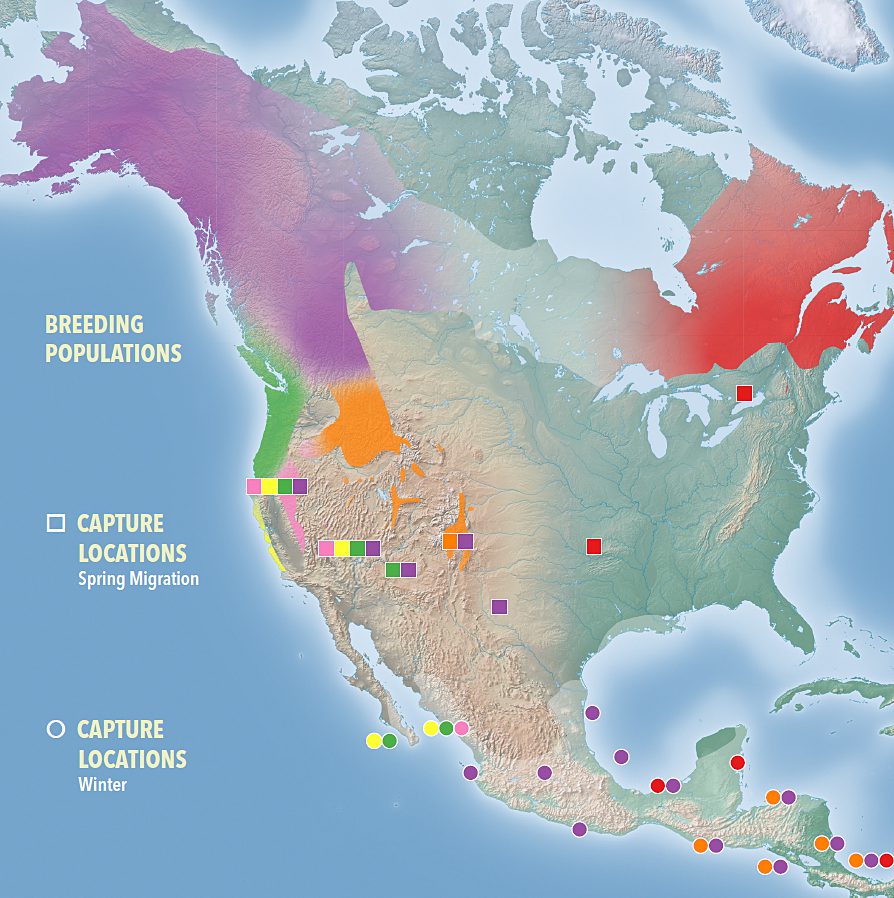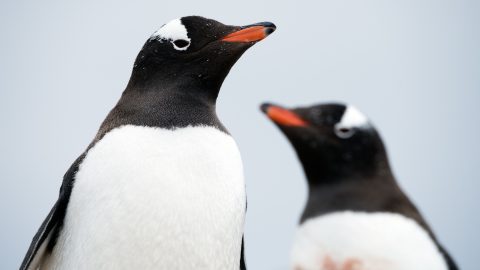Capturing Migration in a Strand of DNA: Feathers Reveal a Bird’s Origins
By Abby McBride
January 26, 2016
Used to be that if you wanted to know the path of a migrating songbird, you had to band the bird, wish it luck on an arduous journey, and cross your fingers that someone would catch it again someday. Then came electronic tracking devices, which are helpful if a bird is big enough to carry one. But now, it’s possible to figure out a bird’s migration route from nothing more than the DNA in a single feather.
The new method, unveiled in a 2014 study led by Kristen Ruegg of the University of California, Los Angeles, promises to help scientists assess threats to small migratory birds all along their annual paths. Ruegg’s test species was the Wilson’s Warbler, a tiny, black-capped yellow songbird that breeds across northern North America, winters across Central America, and shows up as a migrant everywhere in between.
Traditionally, tracking small birds has been tough: of the 307,489 Wilson’s Warblers banded in the past century, only 289 have ever been recaptured. (That’s less than 0.1 percent.) Satellite trackers—though they provide exquisite detail for larger birds—are too heavy for a 10-gram warbler to carry, and too expensive for widespread use. Their low-tech counterparts, ingenious devices called geolocators, pose the same limitation as bands: you have to recapture the bird to recover the data.
Enter genetic markers, which are variations in DNA that birds are born with and pass on to their offspring. Over evolutionary time, bird populations living in different regions can accumulate their own distinct sets of genetic markers, which allow scientists to match a bird to the regional population it came from, no matter where they catch it. All they need is the technology to wade through all that DNA and find the markers.
That kind of technology first made a splash in a study of humans in 2001. A landmark study identified the geographic origin of 3,000 Europeans to within a few hundred kilometers, solely from information in their DNA. Ruegg, along with her graduate adviser at the time, Thomas Smith of the University of California, Los Angeles, were inspired to start the Bird Genoscape Project.
“It was just beautiful,” Ruegg said, “and we thought, this is what we can now do for migratory birds.” Fortuitously, Smith had already spent two decades collaborating with dozens of banding stations across the continent to collect hundreds of thousands of migratory bird feathers, with the hope to someday extract and sequence the DNA in the base of each feather shaft. “It was basically a huge data set awaiting a tool,” Ruegg said.

Pulling feathers from this archive, Ruegg and colleagues went to work. They analyzed the DNA of 22 individual Wilson’s Warblers that had been caught at each of five recognized breeding regions and encompassing all three known subspecies. They identified 100 genetic markers that, in combination, could pinpoint which breeding region each bird had come from. With this key in hand, they analyzed 1,626 more feathers from the archive, this time from birds caught during their migration and at Central American wintering sites.
The result, according to the genetic markers they recovered from the feather DNA, was a map of the entire continent. It showed six genetically distinct populations: where each population breeds, where it spends the winter, and even some of the points along its migratory route.
Just imagine visiting a banding station in the southwestern United States, where hundreds of Wilson’s Warblers might pass through during spring migration. All of those birds look essentially the same, leaving you to wonder where each one is coming from and where it’s headed to breed—the California coast, interior California, the
Pacific Northwest, or Alaska and the Yukon? Now, thanks to genetic markers, you can pluck a single feather to fill in the details of that journey.
Ruegg’s research team even revealed striking patterns in migration timing: at a station in Arizona, birds en route to coastal California came through first, followed by Pacific Northwest birds, and then Sierra Nevada breeders. Birds headed all the way to Alaska were the last to file through.
That kind of information can be invaluable for exploring the regional factors causing bird populations to grow or decline, especially since about half of our migratory songbirds are thought to be doing the latter. Ruegg is now working on developing similar maps for more migratory species, including the Willow Flycatcher, whose south-western subspecies is endangered.
This genetic tracking method may not provide the pinpoint precision of satellite trackers, or even the fuzzy, within-60-miles precision of a geolcator. But with 80 to 100 percent accuracy in identifying a bird’s breeding population, and the power to screen 300 birds per day for only $10 per bird, it has huge potential for studying migratory routes on a broad scale.
“What was unbelievably novel when [Ruegg] started doing it a few years ago is now becoming standard,” said Irby Lovette, director of the Cornell Lab’s Fuller Evolutionary Biology Program, who was not involved in the study. “This is a boom industry right now—the technology and the analytical capability are racing ahead.”

All About Birds
is a free resource
Available for everyone,
funded by donors like you
American Kestrel by Blair Dudeck / Macaulay Library



